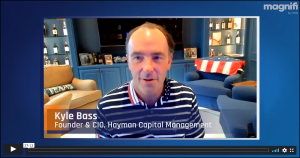Now that the geniuses at the Federal Reserve are on their way to engineering a soft landing — taming inflation while avoiding a recession — maybe their next task should be trying to fix the U.S. retirement system.
For the past year or so I have been bombarded with phone calls, emails and regular junk mail to sign up for Medicare, and this past weekend I finally reached the American Holy Grail: Medicare eligibility. It used to be Social Security, but with medical insurance so outrageously expensive Medicare has become the ultimate goal.
Over this time I've found out the difficulties of trying to maneuver through this vast labyrinth of government benefits. Let me tell you, it ain't easy, so prepare yourself when it’s your time.
How the government ever came up with this plan, I’ll never know, unless its intention was to deliberately confuse the heck out of its oldest citizens and to create a whole industry to help people navigate it. In that it has succeeded.
The first thing you need to know is that Social Security and Medicare are joined at the hip, but not exactly. While you’re eligible for Social Security starting at 62, you have to wait until 65 before you can sign up for Medicare, which again, is the more important of the two, unless you’re lucky enough to have your medical insurance covered by someone else, like your employer. For the vast majority of everyone else, however, Medicare is a critical benefit.
Maybe Bernie Sanders’ idea of Medicare-for-all isn’t such a great idea, but at least the two should start at the same time, just to avoid confusion.
First there’s the question of when to start taking Social Security. While you can start taking benefits as early as 62, you don’t reach your “full” payout until later, depending upon when you were born. For those born in 1957, you reach “full” retirement age at 66 and 6 months; add another six months if you were born in subsequent years.
Now, don’t confuse “full” retirement age with your “maximum” Social Security benefit, which occurs when you turn 70.
Confused yet? I’m just getting warmed up.
Most of the advice you hear about when to start taking Social Security is that you should wait until you reach your “full” benefit or, better yet, your “maximum” benefit. That’s because benefits rise by about 8% a year between 62, when you’re eligible to collect, and beyond. And the difference is indeed meaningful. For example, if you start collecting when you’re 62, rather than 66 ½, your monthly benefit will be reduced by $725, or 27.5%. Now that’s every month for the rest of your life.
While it may indeed be more financial advantageous to wait for the bigger payout, the fact is lots of people can’t – they need the money now. In fact, about a third of eligible recipients start collecting as soon as they can, at 62.
Waiting to collect isn’t always the best advice. If you believe you have a short life expectancy, either because of your lifestyle, family medical history, or both, it may be wise to start collecting early.
You also need to consider the amount of money you will forgo by waiting until “full” or “maximum” retirement age – that’s a lot of monthly payments you’ll be missing. In fact, the breakeven point between the two occurs around age 78, so if you don’t think you’ll live to see that, it may be wise not to wait to start collecting.
Now let’s get back to Medicare, whose rules are just as complicated.
There are several parts to Medicare. Part A, which covers hospitalization, is free. Yes, you heard that right - FREE.
The most expensive medical expense you can probably face is spending a night in the hospital, which Medicare estimates costs an average $13,600. And yet that coverage is free. I kid you not.
Part B covers your doctor visits, but there is a fee for that, which comes directly out of your Social Security payment. You are automatically enrolled in both Part A and B when you start collecting Social Security (I told you they were joined at the hip).
Part D covers your medicines, but not all the drugs you take are covered by Medicare (neither are dentistry, eyecare, and hearing aids, i.e., the stuff you really need when you’re old). There’s a fee for this, too.
Which brings us to Medicare “supplemental” insurance and “advantage” plans, which sound the same but are completely different. You’ve probably heard about them on TV.
As the name implies, supplemental insurance — which you also have to pay extra for - picks up some of what Medicare doesn’t cover (see above).
Advantage plans, by contrast, largely take the place of Medicare, but their premiums and coverages range all over the place. In case you were wondering, Advantage plans are also known as Medicare Part C.
I failed to mention that Social Security and Medicare make up the lion’s share of the federal budget and run out of money every few years, at which time Congress has to “fix” them to make them appear solvent for a while, which usually means making them even more complicated.
So maybe the Fed is the right place to seek a solution. It seems to solve just about all our other financial problems.
George Yacik
INO.com Contributor
Disclosure: This article is the opinion of the contributor themselves. The above is a matter of opinion provided for general information purposes only and is not intended as investment advice. This contributor is not receiving compensation (other than from INO.com) for their opinion.

